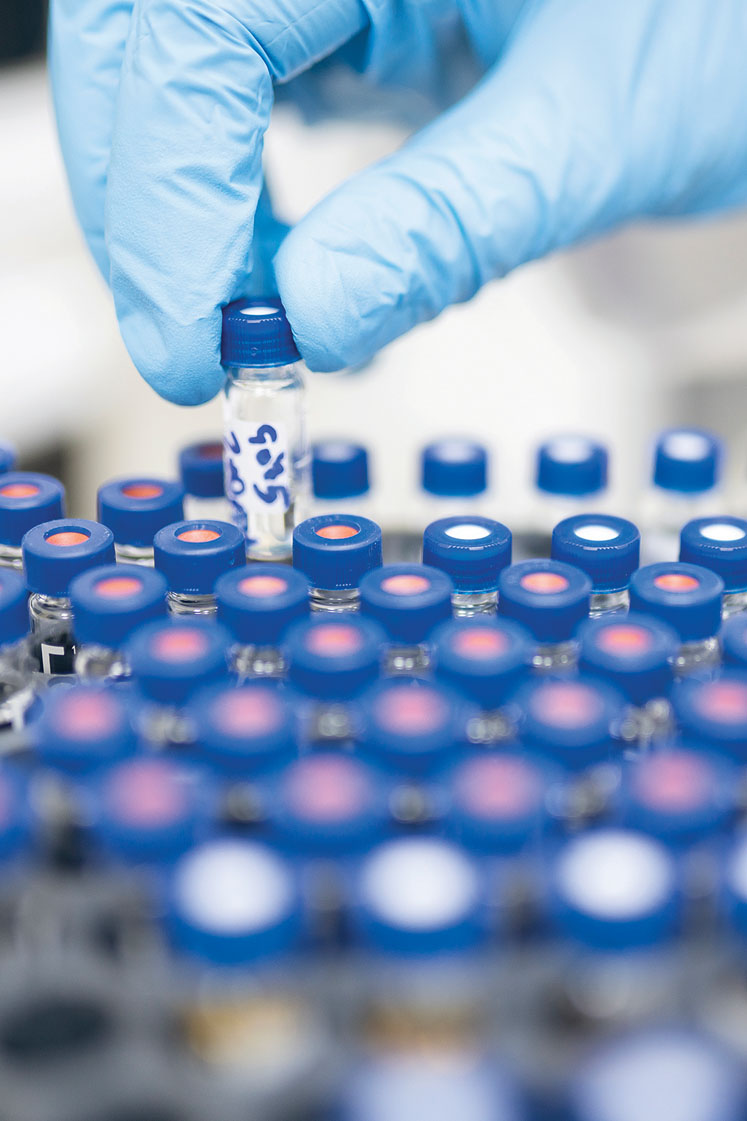Drug metabolism and pharmacokinetic (DMPK) studies are critical to the discovery, development and even post-marketing surveillance of drugs.
These studies elicit information regarding the absorption, distribution, metabolism, excretion and toxicity (ADMET) of specific drugs and any potential drug-drug interactions (DDIs), which, in turn, informs us about the clinical efficacy and safety profile of these compounds. The optimisation of the DMPK properties of a molecule is one of the most critical aspects of developing a new therapeutic.
The routes and extent of metabolism must be characterised to understand differences of exposure in metabolically compromised individuals and to understand any potential DDIs. Any major metabolites must also be characterised, as per industry guidelines, when appropriate, to understand whether those metabolites present a toxicity risk.
The pharmacokinetics (PK) must be well characterised to understand efficacious dose assessment and toxic exposure levels, as well as to establish dosing regimens.
Metabolism and in vivo stability information is also a key component of understanding the exposure. Such data can support the optimisation of drug design and the selection of lead compounds for clinical development by identifying which candidates are more likely to succeed — as well as which would be more likely to fail owing to a lack of efficacy and/or poor safety profiles.
This study of these processes continues to be relevant in clinical trials and beyond, as they clearly pertain to the efficacy and safety profile of the drug in various patient populations and individual subjects.
The emergence and growing predominance of biologic compounds in the clinic and in drug development pipelines raises new challenges for DMPK studies. Although the fundamental principles of PK apply equally to both large and small molecule compounds, the biological properties of large molecule biologics, such as monoclonal antibodies, tend to differ substantially from their small molecule counterparts.
Moreover, new modalities such as gene therapies introduce greater complexity and diversity, requiring more flexible and comprehensive tools and methods for DMPK studies.
For example, compared with traditional small molecule drugs, oligonucleotide-based medicines introduce novel complexity by being synthesised chemically — like small molecule compounds — but behaving at a cellular level with mechanisms of action that more closely resemble those of large molecule biologics.
This can be particularly important as the DMPK information is often used to determine the pharmacokinetic and pharmacodynamic (PK/PD) relationship of investigational biologic medicines to support the establishment of the clinical dosing regimen for first-in-human (FIH) clinical trials.

To meet the growing needs of biologic DMPK studies, other methods may be needed to complement ligand binding assays (LBAs). There are multiple reasons why LBAs alone may not be sufficient for the DMPK assessment of biologic drugs.
To address these limitations, which are increasingly encountered by our clients, we at SCIEX have developed solutions to meet the real-world needs of DMPK for next-generation therapeutics. The approach that is emerging rapidly as the orthogonal method of choice for DMPK is that of liquid chromatography (LC) using microflow gradients, coupled with tandem mass spectrometry (MS/MS).
Top five limitations of LBAs
Long assay development cycle: The overwhelming majority of LBAs are dependent on the generation of detection antibodies, which bind to specific epitopes and detect the lead compounds and/or their metabolites in the biological test samples.
Even with the abilities of the best monoclonal antibody platforms, the generation of high yields of highly selective and high affinity antibodies is still a very long process. Other methods may not require the time-consuming development of bespoke solutions.
LC-MS/MS depends on almost exactly the same reagents from assay to assay, with only the actual mass spectrometry (MS) parameters requiring tuning for each different biotherapeutic being tested. The optimisation of the MS parameters from assay to assay can even be omitted if SWATH acquisition is used.
Little indication of biotransformation: Detection antibodies are essentially binary in their activity toward an intended antigen, which means that they are limited to either binding to an epitope or not. This provides little information about the biologic and the absence of binding to an epitope could be because of biotransformation of the compound.
Common transformations include clipping, deamidation and oxidation of the biologic or its metabolite. The detection and identification of such biotransformations are among the greatest strengths of LC-MS/MS. This method is able to capture biotransformation information along with PK measurements in one go — with a single injection of the test sample and without the need for reanalysis.
It is the non-targeted screening power of LC-MS/MS with data-independent acquisition (DIA) by SWATH that allows it to look for both known and unknown analytes, as well as pharmacodynamic markers.
False negatives: LBAs are susceptible to false negatives, even when the detection antibodies have sufficient affinity and selectivity. Antidrug antibodies, receptor shedding or aggregation can interfere with detection in LBA assays. Similar to biotransformation detection, LC-MS/MS can easily detect the presence of any type of protein contaminants that would otherwise produce a false negative in an LBA.
Moreover, LC-MS/MS can be particularly useful as an assay platform for DMPK assessment in early stage drug development before specific capture reagents for LBAs are available.
Expensive reagents: Instruments for LBAs can vary from not very expensive to extremely pricey, depending on the capabilities of the platform, but reagent costs are always very high. Highly selective and high affinity detection antibodies are very expensive on a per sample basis.
Although the initial investment is high for LC-MS/MS, the per sample reagent expenses are very low. The exquisite sensitivity and selectivity across three different dimensions — LC, precursor mass, product ion mass measurements — affords the use of fairly simple and low-cost reagents.
Another upside to the use of mass spectrometry is its multiplexing capability; it can monitor multiple analytes with greater specificity in a single assay than LBAs, thus reducing the need for multiple runs.
Limitations for next-generation therapeutics: Therapeutics such as antibody drug conjugates (ADCs) or antibodies with covalently attached peptide or polymer groups can be heterogeneous enough that LBA detection antibodies are not capable of detecting all their forms.
LC-MS/MS is highly flexible and is well suited to novel types of biotherapeutic chemistries. The very high context information captured by LC-MS/MS is capable of describing all of the heterogeneity that these next generation molecules exhibit.
Owing to its higher specificity compared with LBA, LC-MS/MS can also provide insight into metabolic pathways and structural liabilities that LBA cannot. Moreover, the analysis can be performed in a single injection in one assay.

Future-proofing biologics DMPK assessment
In recognising these emerging analytical needs for DMPK assessment in biopharma, companies at the forefront of developing orthogonal technologies for DMPK analyses have invested in research and development (R&D) to produce application resources that focus on optimised DMPK workflows, instrument hardware, data processing software, reagents and sample preparation.
With a team of scientists dedicated to working with a broad range of biopharmaceutical customers to understand and support their analytical needs, novel DMPK assays have been developed that address real-world industry needs, including overcoming the top five limitations of LBAs.
Although regulatory authorities have not stipulated that LC-MS/MS data are required for DMPK studies of biologics and other next-generation therapeutics (such as gene therapies), it may reasonably be considered that, in time, this may become a requirement, owing to the increased complexity and diversity introduced by these new modalities.
It is not a stretch to recognise that LBAs may miss crucial information if key metabolites or biotransformed compounds are not detected by the detection antibodies.
LC-MS/MS analysis may therefore be used to confirm that the LBAs employed are sufficient in their detection coverage. Such analyses could even be used to inform decisions regarding which commercially available LBA is most appropriate for the study.
As the discovery, development and clinical evaluation of investigational medicines takes so long, it may be prudent to begin ensuring that LC-MS/MS data are obtained and available to confirm the choice of LBAs and corroborate their results.
Anticipating the potential requirement by regulatory authorities for this additional data as part of the risk management of clinical development programmes could mean substantial cost and time savings, and the minimisation of setbacks later down the road.
